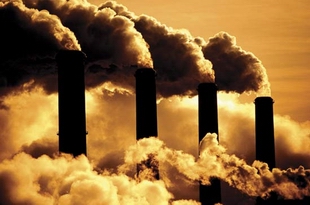
by Jeff Smith, co-chair, 350 Missoula
Please take a few minutes to comment on the Millennium Bulk Terminals proposal being considered by the State of Washington through June 13.
Please go here — http://www.

Originally there were six proposals for Big Coal export facilities along the coastline of the Northwest. There is only one left, and it deserves the same fate as the others.
The $680 million terminal would ship 44 million tons of Montana and Wyoming coal to Asia annually from Longview, Washington.
The inescapable fact is that exporting North American coal to be incinerated in Asia means more global warming here at home.
In the Northwest we are experiencing shorter winters, less snow, less water in our streams and rivers, more and more extreme forest fires. One only needs to look to our neighbors to the north in Fort McMurray, Alberta, to see the kind of catastrophic future fires in store for us if we greenlight projects like the Millennium Bulk Terminals, pretending they are benign.
According to the Draft EIS by Cowlitz County and the Washington Department of Ecology, the terminal would increase global carbon emissions by
Please take a few minutes to comment on the Millennium Bulk Terminals proposal being considered by the State of Washington through June 13.
According to the Draft EIS by Cowlitz County and the Washington Department of Ecology, the terminal would increase global carbon emissions by the conservative estimate of 3,231,025 metric tons annually, the equivalent of adding seven new coal power plants a year. It’s wrong to cause catastrophic climate change. It’s wrong for companies like the Millennium Bulk Terminals to profit from the resulting environmental and social wreckage.
This proposal would add 16 coal trains a day, half loaded, half empty to and from the Powder River Basin. The increased trains will exceed current capacity in Idaho and Montana, and, since the trains go through the middle of our towns and cities, the increase in coal dust and diesel fumes will adversely affect the health of all humans in residential neighborhoods next to the tracks.
The wide-ranging health dangers of coal dust include exposure to toxic heavy metals like mercury, cancer, and increased rates of asthma, especially in children.
A BNSF Railway study found that as much as a ton of coal dust can escape from a single loaded coal car. Other reports estimate that three percent of a coal car’s load, which is typically 100 tons or more, can blow away in transit. The US Department of Transportation, meanwhile, classifies coal dust as a “pernicious ballast foulant” that can weaken and destabilize rail tracks.
The draft EIS mentions unavoidable and significant delays at rail crossings near the facility but should also take into account multiple delays route-wide, from eastern Montana to western Washington.
As we all know, the railroads parallel Montana’s rivers. Our rivers are for the most part still wild and healthy, and they support a recreational economy second to none. Moving 44 million tons of coal a year threatens these rivers and the economy that depends on them.
Finally, the overall economics of the proposed export facility are outdated. China cut its coal imports by a third in 2015. Coal prices have plummeted 62 percent in the last five years, and U.S. coal production has dropped by more than half since 2008. Some 50 coal companies have declared bankruptcy since 2012.
There you have it. Thanks for taking the time to comment on this last bogus coal export terminal proposal.
metric tons annually, the equivalent of adding seven new coal power plants a year. It’s wrong to cause catastrophic climate change. It’s wrong for companies like the Millennium Bulk Terminals to profit from the resulting environmental and social wreckage.
This proposal would add 16 coal trains a day, half loaded, half empty to and from the Powder River Basin. The increased trains will exceed current capacity in Idaho and Montana, and, since the trains go through the middle of our towns and cities, the increase in coal dust and diesel fumes will adversely affect the health of all humans in residential neighborhoods next to the tracks.
The wide-ranging health dangers of coal dust include exposure to toxic heavy metals like mercury, cancer, and increased rates of asthma, especially in children.
A BNSF Railway study found that as much as a ton of coal dust can escape from a single loaded coal car. Other reports estimate that three percent of a coal car’s load, which is typically 100 tons or more, can blow away in transit. The US Department of Transportation, meanwhile, classifies coal dust as a “pernicious ballast foulant” that can weaken and destabilize rail tracks.
The draft EIS mentions unavoidable and significant delays at rail crossings near the facility but should also take into account multiple delays route-wide, from eastern Montana to western Washington.
As we all know, the railroads parallel Montana’s rivers. Our rivers are for the most part still wild and healthy, and they support a recreational economy second to none. Moving 44 million tons of coal a year threatens these rivers and the economy that depends on them.
Finally, the overall economics of the proposed export facility are outdated. China cut its coal imports by a third in 2015. Coal prices have plummeted 62 percent in the last five years, and U.S. coal production has dropped by more than half since 2008. Some 50 coal companies have declared bankruptcy since 2012.
There you have it. Thanks for taking the time to comment on this last bogus coal export terminal proposal.